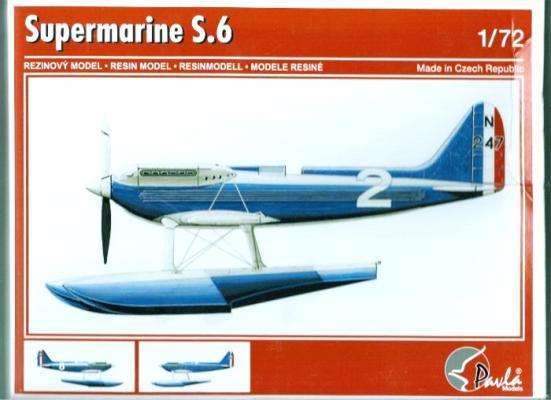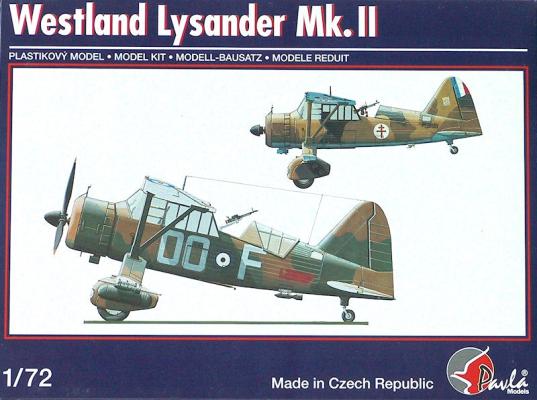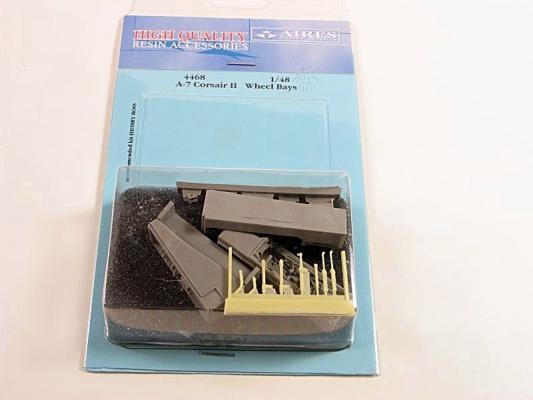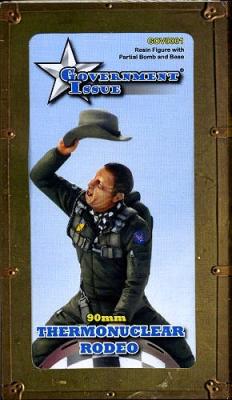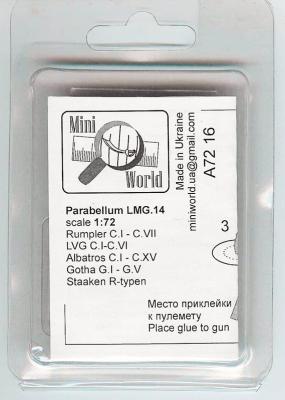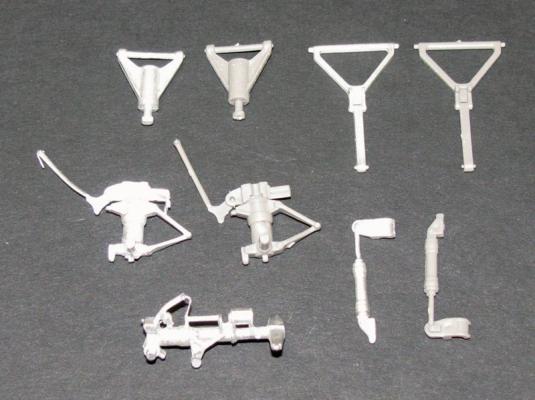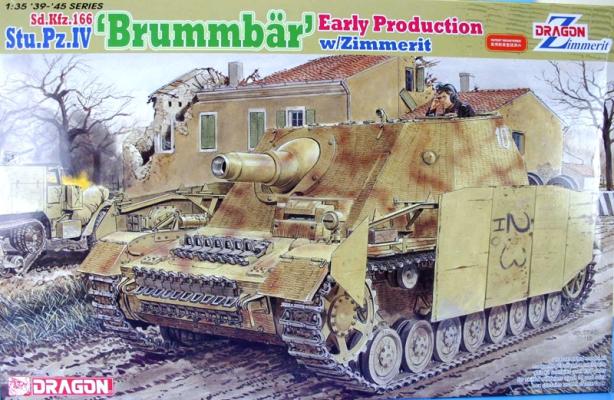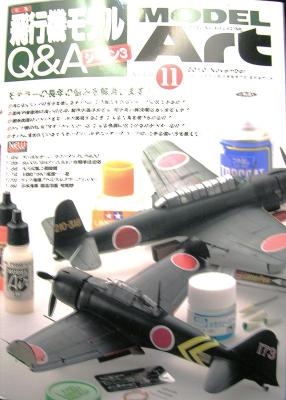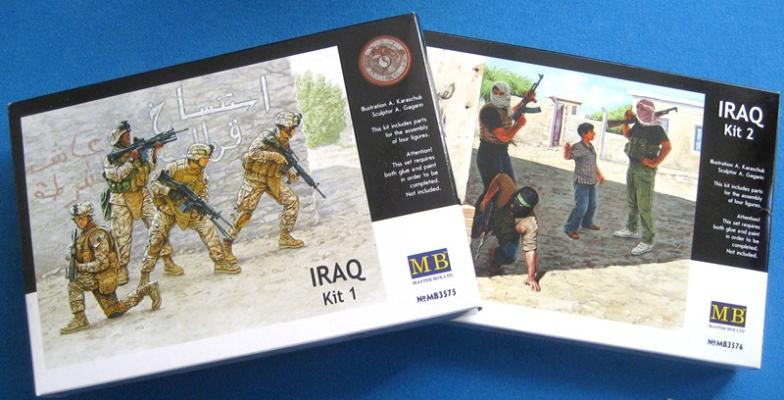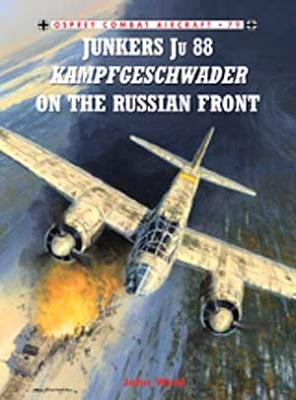The line of Supermarine racers, designed to attack and eventually acquire the Schneider Trophy for Seaplanes, actually began with the S.4, a mid-wing cantilever monoplane with amazing aerodynamic form for its time, 1925. This floatplane racer was sent to the United States for the eighth Schneider Cup races at Baltimore, where it suffered a number of mishaps before it finally was wrecked when the pilot lost control, fortunately with no injuries. The race was won by Lt. Jimmy Doolittle, with the backup Gloster III placing second.
What's New
Allow me to start by thanking Pavla Models for their most generous contribution of numerous models for review by IPMS/USA.
Background
The "Lizzie" is one of my favorite aircraft for some quirky reason, and one on a very short list of those I wish I had the opportunity to fly myself. There were three versions - unsurprisingly the Mk.I, II, and III. There were a 189 Mk.I, 517 Mk.II, and 964 Mk.III, including license built. The Mk.I and Mk.III pretty much look alike - the Mk.II is recognizable by the smooth, slightly tapered engine cowl. As the Mk.I were quickly shunted off to the Middle East, the Mk.II is most prevalent in the early war years in Europe.
Every so often as a reviewer, you end up with a product that wasn’t quite what you thought it was. Thus was the start of this, where I had volunteered to review this new set from Aires covering A-7 landing gear bays in 1/48. However I thought they were for the Hasegawa kit, but alas, they are for the Hobbyboss kit! Knowing this occasionally happens to us as modelers, where we walk out of store with the latest aftermarket treasure only to find it’s for the other manufacturer’s kit, I set about to see how this set would fit in the Hasegawa 1/48 A-7E.
As a devotee of SciFi and the related genres, I was always a fan of Stanley Kubrick’s 1964 movie Dr. Strangelove. It had a great cast with George C. Scott, James Earl Jones, Peter Sellers and many more including the subject of this diorama, Slim Pickens as Major “King” Kong who most notably rides a nuclear bomb out of the bottom of a B-52 to detonate in Russia. I could go one more but you really need to watch is to appreciate the subtle and extensive humor thrown around.
Wow, just looking at this piece has given me a re-found respect for you Braille-scale builders! I don’t see how you can do it. I have enough troubles bending and gluing photo-etched parts. I will learn to start soldering them soon. Can’t even imagine trying to do it 1/72 scale. That is an issue anyone that buys this kit will need to overcome.
Mini World appears to be a relatively new company or at least a new off shoot from a company in the Ukraine. There were many companies that carried their line (all overseas) but only Hannants had this particular item listed on their website. Mini World does not have a website of its own. Their items are pretty impressive. They currently have 18 different machine guns on the market. Most are for WWI aircraft but I did also notice two different DShK kits available as well.
I have heard some ask “Why pay for landing gear that’s already in a kit?” The simple reason to use SAC gear comes down to basic physics: Metal gear makes for a robust structure that doesn’t fail under the weight of a model. Resin models are where metal gear is required (but sometimes not provided); on large plastic models, this requirement is particularly noticeable on aircraft with offset main gear such as the Hawkeye, weight distribution is outside of the gear centerline, and the wheel/tire assemblies tend to splay out over time, or outright break off.
Most Dragon models today are a collection of old sprues and new sprues added to create a new kit variant. In this case, Dragon has done so and in this case, redid the areas that had zimmerit applied. This being said, you have many options that need to be reviewed and decided on before you start this kit.
Steps 1, 2, & 3 - Lower Hull
As with most armor kits, the first step is the running gear. Remember those choices I mentioned in the paragraph above, well, here is the first one. You have a choice of two slightly different drive sprockets. The second choice is between the end caps over the bogie springs, and the third is the choice of mufflers.
The instructions give you two sets of muffler and you will need to drill out some locating holes depending on which muffler type you have chosen.
The November 2010 edition of the Model Art Magazine has the following articles:
- Main article is Q&A how-to using the following kit builds to discuss selecting paint colors, painting winter camouflage, different types of paints and painting techniques, different glues and their use, use of canopy masks and photo etch, detailing cockpits and engines, painting national markings and different modeling tools:
- Hasegawa 1/32 Bf109 F4 trop - Hobby Boss 1/32 IL-2 Sturmovik on skis - Tamiya 1/48 Mitsubishi A6M3/3a - Hasegawa 1/48 Nakajima B6N2 Tenzan “Jill” - Tamiya (Italeri) 1/72 Mig-29 Fulcrum
Master Box Ltd. is a company that makes many different injected molded kits with an emphasis on making their products for dioramas. Their kits have a huge range of themes and accessories for dioramas, including figures of people and various animals, carts, WWII tanks & motorcycles to mention a few. Each kit tells a story of its own and together can bring your diorama to a better level of realism. I know they have been around from at least 2006 but however long it might be, their products seem to be excellent.
Illustrator and author, John Weal, has provided the third and final publication in the Ju-88 trilogy with the release of Ju-88 Kampfgeschwader on the Russian Front. Previously published are Mr. Weal’s books featuring the Ju-88 on the Western Front and on the North African/Mediterranean Front.
Mr. Weal is fluent in German and that ability adds significant color and detail to the text. Little details make the reading lively and interesting an added plus to the historical documentation that one normally finds in Osprey publications. For example, Mr. Weal describes a situation in which some squadron leaders are opening their flight orders and he describes the flight orders as being enclosed in a green envelope.

